- Home
- Simon Winchester
The Perfectionists Page 13
The Perfectionists Read online
Page 13
Joseph Bramah’s “challenge lock” remained unpicked for sixty-one years after first being displayed in a window in London’s Piccadilly. An American named Alfred Hobbs eventually beat the challenge, after fifty-one hours of delicate work, allowing the Bramah lock company to declare its invention essentially burglar-proof.
IN THE CLOSING weeks of the Great Exhibition at the Crystal Palace, in the hall reserved for displays from the United States, an unexpected new exhibit was placed on view: on the floor of a secure glass case was a black velvet cloth, and laid on it, arranged in neat rows, were two hundred newly minted solid gold one-guinea coins. Their unanticipated appearance tells one final story of midcentury precision engineering, one related to the solving of a problem that had been created nearly sixty years before.
A man had managed to pick Joseph Bramah’s lock, the very lock that had sat patiently in the front window of the firm’s showroom at 124 Piccadilly since 1790. He was a fellow exhibitor at the Great Exhibition, he was a locksmith, he was a competitor, and he was an American. He had come across the Atlantic with the specific intention of picking every unpickable lock that British engineers could place before him.
His name was Alfred C. Hobbs, and he was born in Boston in 1812, of English parents. Maybe that had something to do with his burning passion to demonstrate that American locks were vastly superior to their British-made counterparts.
Upon his arrival at the Great Exhibition, he took up his position at Stall Number 298, at the eastern end of the main hall, as representative of the New York firm of Day and Newell, makers of the so-called parautoptic permutating lock, which Hobbs was convinced would remain unpickable for all eternity.
Not so with the Bramah lock. Once Hobbs had set out his stall in the Crystal Palace, he wrote a formal letter to the Bramah company, requesting an appointment in Piccadilly “in relation to the offer you make on the sign in the window for picking your lock.” Joseph Bramah himself had died forty years before, presumably smugly content that his lock challenge had never been met. It was his sons who now ran the firm, and they received—with some trepidation, as Hobbs’s reputation preceded him—the fateful letter. They had no choice but to agree to meet, and a committee of experts was promptly set up to ensure that any attempt on the lock, as precise a mechanism as eighteenth-century England could produce, would be made fairly, and without totally destroying the lock’s internal mechanisms.
And Hobbs picked it. It took him fifty-one hours, spread over sixteen days, to raise the lock’s hasp and declare it open, and thus successfully broken. He used a variety of tiny and specially contrived instruments to work on the lock’s innards—one of them a tiny micrometer screw he was able to attach to the wooden base on which old Joseph Bramah had first mounted the challenge lock. (Had it been mounted on an impenetrable iron base, this instrument could not have worked. It screwed into the wood, thus freeing Hobbs to use both his hands to work inside the two-inch-long lock barrel, while his instrument kept various of the eighteen tiny sliders inside the lock depressed.) He also used magnifying lenses, with brilliant lights whose minuscule beams were reflected inside the lock by means of special mirrors. He used minute brass measuring scales to see how far depressed was each slider. He used tiny hooks to pull back any slider that had been depressed too far. He had laid out beside him what resembled the contents of a surgeon’s instrument tray, minus scalpels, for the sole purpose of breaking the Bramah lock and, by doing so, asserting the superiority of American precision.
Bramah paid up, but they grumbled as they did so that what the American had done, with his trunkful of instruments and his fifty-one hours of work, was simply not cricket. He hadn’t abided by the implied rules of engagement. He had brought to bear on the sorry lock more time and energy than any self-respecting burglar would ever spend.
The team of arbitrators agreed. They pointed out the unfairness of Hobbs’s approach, and concluded, ringingly—though well aware that the two hundred guineas had most sportingly been handed over—that “Hobbs has done nothing calculated in the last degree to affect the reputation of Messrs Bramah’s lock; but his exertions have, on the contrary, greatly confirmed the opinion that, for all practical purposes, it is impregnable.”
The two hundred guineas then glowed impertinently under the lights of the Crystal Palace for many weeks to come, as Alfred Hobbs basked in his victory by insisting they remain in situ as testament to his triumph. It was short-lived triumph, and the consequences indicate the eventual outcome. As the arbitrators suggested, the breaking of the Bramah lock did the firm no harm at all: customers lined up to buy a lock that had taken an expert sixteen days to pick. The firm still exists in London today, and sells its locks worldwide, all of them based upon the original design of Joseph Bramah of 1797.
Meanwhile, the firm of Day and Newell of New York went out of business soon after the Great Exhibition. Its parautoptic permutating lock had been successfully picked soon thereafter, and easily, with the use, it was said, of only one wooden stick. And the man who picked it was the scion of a new firm of precise locksmiths, and founder of the firm that is now part of the biggest lock maker in the world, Linus Yale.
Chapter 5
(TOLERANCE: 0.000 000 000 1)
The Irresistible Lure of the Highway
So profound was the effect of the Model T Ford on America, so much did it change the nature of the nation . . . its art, its music, its social structure . . . its health and wealth and arrogant insularity, that Henry Ford who was responsible for it all must be seen as the most effective revolutionary . . .
—L.J.K. SETRIGHT, DRIVE ON! (2003)
I was closing the trunk of a borrowed Rolls-Royce Silver Seraph one midwinter’s day in early 1998 when I felt a sudden sharp sensation in my right index finger. I looked down: a drop of blood was bubbling up from a small nick—insignificant in itself, probably not even worth a Band-Aid. Yet, that some part of a brand-new Rolls-Royce motorcar had been sharp enough to inflict a cut—that did seem worthy of note, not least because the Silver Seraph had been deliberately designed to reinforce, maybe even to reestablish, the idea that in 1998, and despite all the competition, Rolls-Royce Motors still made the very best car in the world.
My co-driver and I checked, running our hands gently across the mirror-smooth surfaces of the rear of the car. There was no doubt this was a beautiful machine: deep blue, with thick wool rugs lining the floor of the trunk, special containers for umbrellas, all the chromium parts thick and solid and highly polished, the lights large and sturdily recessed, even the license-plate holder robust and weatherproof, as if built for a warship.
Except, running my hand along the lower limb of the license-plate holder, I found two tiny screws, and one of them, the right-hand one, seemed to be tilted at an angle such that its razor-sharp steel edge protruded by perhaps a fraction of a millimeter above the mirror-flat surface of the chromium. I ran my thumb across it. There was no doubt; this was the culprit: a simple screw that some apprentice had tried to turn into a hole, that had been ever so imprecisely bored at an angle, fractionally out of true.
For a machine so self-consciously promoted as the motoring world’s finest example of precision engineering, and at a price of eye-watering unaffordability to most, this seemed scarcely credible, an unforgivable error, a black mark. My unease was confirmed a few weeks later when a motoring reviewer for one of the London newspapers described how he had taken a Seraph out for a test drive and, after parking it, found not only that could he not release the parking brake, but that the brake handle came off in his hand, its connecting cables having snapped off cleanly somewhere in the bowels of the machine. Clearly someone in the factory was not paying proper attention.
It therefore came as little surprise to me, though of great and shocked dismay to most everyone elsewhere in Britain, that within months, and quite coincidentally, the long-revered institution that had been Rolls-Royce Motors became effectively defunct, and was sold off to the German company Volkswagen.<
br />
THE COMPANY THAT the world still knows by its hyphenated name, Rolls-Royce (though financial crises and corporate shenanigans of one kind or another have caused there to be all too many versions of the title) was famously founded in Manchester in May 1904. One year previously, in June 1903, and with much-less-remembered ceremony in Detroit, Michigan, the Ford Motor Company had been officially incorporated. Both companies were founded by dedicated, obsessive, oily-handed engineers, both men christened Henry, both born in modest circumstances and in the year 1863.
Once their respective ambitions had jelled, these two men turned out to have markedly different goals. Henry Royce was quite simply committed to building for the discerning few the finest motorcars in the world, no matter the difficulty and with no concern for cost. Henry Ford, on the other hand, was determined to make the world of personal motor transport available to the greatest number of people imaginable, at as low a cost as manufacturing would allow. To achieve their separate ambitions, Henry Royce would assemble a team of craftsmen to build his cars by hand, while Henry Ford would create his cars in immense numbers by, in due course, employing machines to help construct them.
Yet, for both men and both endeavors, extreme mechanical precision was the key—precision, wielded either with the methodical tenderness of an engineer who believed himself an artist, or with the ruthless determination of an engineer who believed himself a revolutionary. A comparison of the two companies will illustrate the manner in which precision, by now, in the early years of the twentieth century, a fully established and essential component of civilized existence, was applied in two very different manners, and with two very different eventual consequences.
IT IS UNLIKELY now that I will ever have the wherewithal to own a Rolls-Royce, confirming a condition that has been true for all my days so far. Still, I have long admired the machine. Back at university, I was part of a small group that owned a 1933 model, the classic 20/25, that had been hastily and unattractively converted into a hearse. It drove easily and generally ran well, though its fuel consumption was unpredictable, unstated, and, for university students, profoundly unaffordable. We seldom took it out for more than a casual spin. A friend had a harpsichord, which he mounted in the rear, and he would play it as we drove, entertaining passersby. On the one occasion when the car, on a trip into the Cotswolds, actually did break down (or when it “failed to proceed,” as Rolls-Royce then preferred one to say), the engineers who arrived to make repairs brought a set of black felt coverings to try to mask the car’s identity and save the company embarrassment. This was a largely pointless exercise, and fooled nobody: people would see the felt pads on the “RR” hubcaps and would spy the black tea cosy–like arrangement that more or less covered the Spirit of Ecstasy hood ornament and the Grecian-style radiator on top of which she stood, and would recognize instantly what marque of car was in trouble.
My fondness for the motorcar took fuller flight some years later, in early 1984, when I was given an assignment for a London newspaper to write a number of essays about mainland Europe—about which, an editor cynically remarked, the average Briton knew little, and wished to know less. The essays were each to be reports of my chosen journeys among a variety of cities and made in a variety of ways. So I took a boat from Stockholm to Helsinki; I walked from Cádiz to Gibraltar; I took a train from Victoria Station in London to the Hotel Victoria in Brig, on the Swiss-Italian frontier; and I was to drive a car—this was intended to be the assignment’s cover story—from the westernmost point of Europe to its most easterly, from the headlands of Atlantic Galicia to the then-Soviet city of Astrakhan, where the Volga meets the Caspian Sea.
I left this epic car journey until last, once I was done with the sailing and walking and train riding. Initially, I had been planning to take the old family Volvo on what would be a many-thousand-mile odyssey—except that, toward the end of what must have been a rather too fortifying lunch in central London, I had wondered out loud to Patrick, the photographer who was making the expedition with me, why not take a Rolls-Royce? It might make quite a stir in the Soviet Union, after all.
It was all too easy. A swift call to the company’s PR department, and all was fixed in no more than half an hour: a Silver Spirit in Ocean Blue would be coming off the production line the following morning—a canceled order—and if I could trouble myself to take a train up to the factory in Crewe, the car could be mine for the next two months. “Bring it back in one piece is all we ask,” said the PR man the next morning as he gave me the keys. We shook hands, and Patrick the photographer and I drove off.
The adventures that befell us on what turned out to be the most epic of journeys do not belong in these pages. The precision of the car’s inner workings and the fastidiousness of those who had prepared it for the voyage were such that the eventual ten thousand miles of driving were accomplished impeccably, in perfect and quiet comfort, at high speed where necessary—on occasion, in Bavaria, at as much as 140 miles per hour, no small speed for a three-ton car—and without even the most trivial of mechanical incidents. The only visit to a mechanic came when I met the dealer in Vienna (in those days, Rolls-Royce’s most easterly outpost) to have the engine’s timing slightly altered to take account of the low-quality fuel we would likely encounter beyond the Iron Curtain. “Though, quite candidly,” said the dealer, patting the warm cylinder head, “this engine could run happily on peanut butter, it’s so accommodating.”
The essays duly ran in the newspaper, with, as expected, the Rolls-Royce trip chosen as the cover article, mainly because of the emblematic accompanying photograph. This showed me hamming it up outside the city gates in Kiev. In it, I am sitting on the hood of the mighty blue car, which has been freshly polished and is showroom-gleaming and therefore the embodiment of rich, vulgar capitalism. I am pointing at something or somewhere in the middle distance. What made the image coverworthy was that Patrick had set our Rolls-Royce directly in front of a huge agitprop painting of Comrade Lenin, who was standing, chest out and legs apart in manly fashion, pointing his index finger at the same uplifted angle as my arm, and also into the same middle distance, to a mythical destination that was presumably, for the people of Kiev, the brave and glorious future of the USSR. The contrast could not have been better chosen, the irony inescapable. The publication issue sold well in London; it was banned, I think, in Kiev. The brief local success of the piece spawned a decade of unanticipated gratitude and generosity from the public relations staff at Rolls-Royce Motors, worldwide.
My very next assignment for the newspaper was to write an essay on the gangs of East Los Angeles, as the 1984 Olympic Games were about to open and the local authorities were said to be fretful. Accordingly, I flew to California with another photographer and, upon checking in to the Ambassador Hotel on Wilshire Boulevard, was more than a little surprised to be handed a small brown envelope with a letter inside from Rolls-Royce of Beverly Hills, and a set of keys. “Enjoy your stay,” the letter read. “This is on us.”
“This” was a brand-new behemoth of a car, a black-and-white Rolls-Royce Camargue, the most expensive production car in the world at the time, and one of the least attractive. It was a two-door monster of a machine designed by an Italian on what was evidently a very bad day. It was slow and cumbersome and heavy and a classic example of automotive mutton dressed as lamb, and as such, it attracted much unwanted attention. I was waiting at a red light one hot afternoon when a pair of young women in a convertible drew up alongside. “That a Rolls-Royce?” the driver asked. “Yes,” I replied. She laughed. “Ugliest fucking car I’ve ever seen.”
The story of the Camargue amply illustrates a difference between precision and accuracy. For while the engineers had lovingly made yet another model of a car that enjoyed great precision in every aspect of its manufacture, those who had commissioned and designed and marketed and sold it had no feel for the accuracy of their decisions. As a result, the Camargue was a serious commercial flop, the Edsel of Crewe. The company, just then
starting the slow decline that would end with the nick on my finger and the snapping of the brake cable and the transfer to German ownership a decade or so later, sold just a few more than five hundred Camargues over the ten years the model was in production. In 1985, the year after I had my two-week loan of it (an unsold and unsellable model from the Beverly Hills back lot, I came to realize), the company put it out of its misery and shut Camargue production down for good.
HAD THERE BEEN more justice in the world, the company would have been named Royce-Rolls, as Henry Royce was the man who made the cars, while Charles Rolls simply (and flamboyantly) sold them. Yet, with the name known for years as one of the most familiar brands of all time—only Coca-Cola is said to have been better known—the notion of altering it by even the most infinitesimal degree has long been considered a sacrilege. The hyphen, for instance, is sacrosanct. The diminutive use of “Rolls” is said to have been regarded as inexpressibly vulgar. The men on the shop floor, if pressed to speak about their creations in familiar terms, called them “Royces.”
It was all to the good that Henry Royce was born near Peterborough,* where, soon after his birth in 1863, the Great Northern Railway happened to have built a locomotive repair and maintenance workshop. For although his childhood was both impoverished (in his youth he was obliged to work variously as a bird scarer, newspaper seller, and telegram delivery boy) and harsh (he was just nine when his father died, and in the poorhouse), he had an aunt who with great prescience believed that to learn the trade of engine building would set the boy on course for life. So she paid for three years of apprenticeship for young Henry in the Great Northern Railway workshop, a place that would soon go on to build and repair some of the finest and swiftest ever of Britain’s steam locomotives. And just as she had hoped, her decision to pay her nephew’s fees set him on course for making engines himself. Though, to be sure, his would be motorcar engines that would come to enjoy great repute, and they would be of much greater mechanical delicacy than the ironbound, coal-gorging monsters on which he had trained and numbers of which he had helped bring out from the Peterborough railway sheds.

 The Surgeon of Crowthorne
The Surgeon of Crowthorne Korea: A Walk Through the Land of Miracles
Korea: A Walk Through the Land of Miracles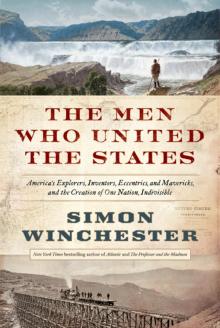 The Men Who United the States: America's Explorers
The Men Who United the States: America's Explorers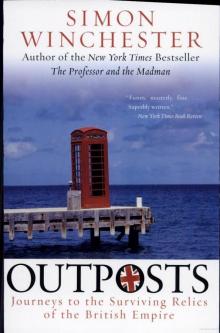 Outposts: Journeys to the Surviving Relics of the British Empire
Outposts: Journeys to the Surviving Relics of the British Empire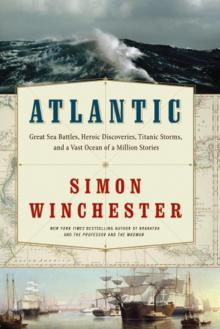 Atlantic: Great Sea Battles, Heroic Discoveries, Titanic Storms
Atlantic: Great Sea Battles, Heroic Discoveries, Titanic Storms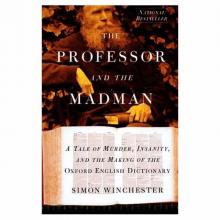 The Professor and the Madman: A Tale of Murder, Insanity
The Professor and the Madman: A Tale of Murder, Insanity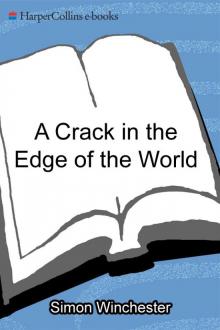 A Crack in the Edge of the World
A Crack in the Edge of the World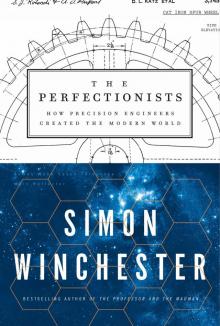 The Perfectionists: How Precision Engineers Created the Modern World
The Perfectionists: How Precision Engineers Created the Modern World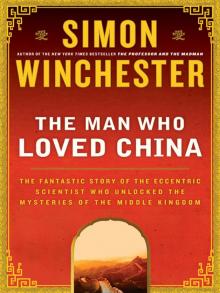 The Man Who Loved China: The Fantastic Story of the Eccentric Scientist
The Man Who Loved China: The Fantastic Story of the Eccentric Scientist The River at the Center of the World: A Journey Up the Yangtze
The River at the Center of the World: A Journey Up the Yangtze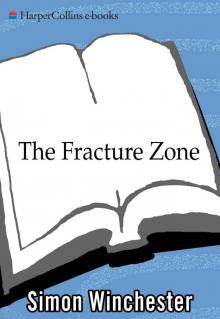 The Fracture Zone: My Return to the Balkans
The Fracture Zone: My Return to the Balkans The Map That Changed the World
The Map That Changed the World Krakatoa: The Day the World Exploded
Krakatoa: The Day the World Exploded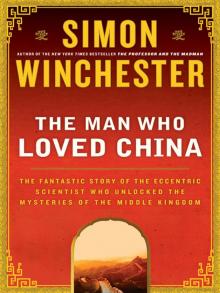 The Man Who Loved China
The Man Who Loved China The River at the Centre of the World
The River at the Centre of the World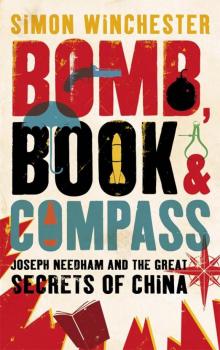 Bomb, Book and Compass
Bomb, Book and Compass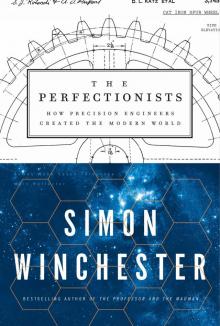 The Perfectionists
The Perfectionists The Meaning of Everything
The Meaning of Everything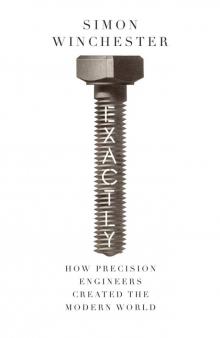 Exactly
Exactly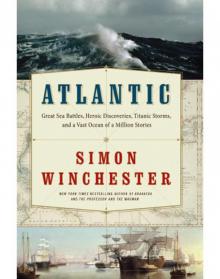 Atlantic
Atlantic Korea
Korea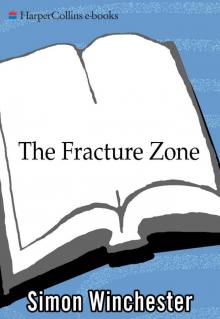 The Fracture Zone
The Fracture Zone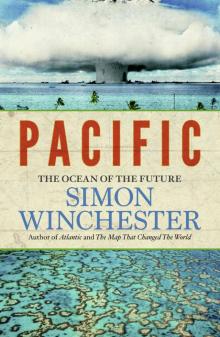 Pacific
Pacific Krakatoa
Krakatoa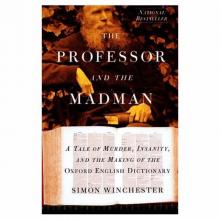 The Professor and the Madman
The Professor and the Madman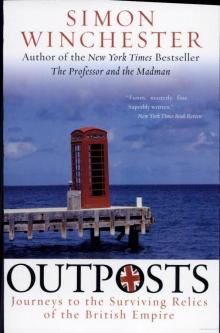 Outposts
Outposts